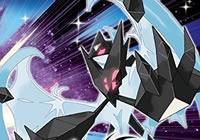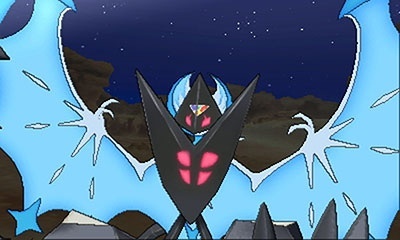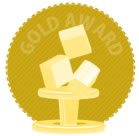Pokémon Ultra Moon (Nintendo 3DS) Review
By Shane Jury  16.11.2017
16.11.2017

As popular high sellers, the mainline Pokémon games have been receptive to a third iteration for each duo every now and then. Red and Blue (or Green in Japan) saw a special Yellow edition that edged closer to the animation but kept the style of its forebears. Gold and Silver gave way to the Crystal version that utilised the Game Boy Color. Emerald focused on the Peacekeeper of the Ruby and Sapphire cover monsters, whilst adding the widely beloved Battle Frontier facility. Platinum would take a similar approach with Giratina and the Distortion World, whilst fixing many critiqued elements of Diamond and Pearl. Not until Black and White would this trend change into full story-sequels. Now, yet again, The Pokémon Company has subverted predictions and given the newest duo of games fresh iterations in the form of alternate takes. How does Pokémon Ultra Moon fare in the spotlight of its predecessor? For Cubed3's review of Pokémon Ultra Sun, please read here.
Like Pokémon Sun and Pokémon Moon before it, Pokémon Ultra Moon takes players to the region of Alola, a Hawaii-inspired group of islands that contain wondrous vistas, lots of unique and memorable Pokémon to catch and battle with, and many trials to conquer. All displayed in luscious 3D visuals and accompanied by beautiful melodies, Alola is a very distinctive locale from previous generation regions. The linear storyline progresses from island to island, and whilst quite generous with location markers and objective awareness, does allow from wider exploration from time to time.

The narrative of Pokémon Ultra Moon is also largely the same as the previous games, with minimal story beat changes to begin with, but many more significant changes occurring as the game progresses and a juicy post-game story to cap things off with. A particular focus on the Legendary Pokémon Necrozma and how it interacts with the cover Sun and Moon duo is a particular highlight.
The game is overall much quicker to reach key events, such as the choosing of the Starter Pokémon, and gives an even larger variety of creatures to encounter in the wild than before. Plenty of minor but helpful Quality of Life changes, such as speeding up Helper Pokémon animations and a slight boost to overall loading times with a New Nintendo 3DS are appreciated.
In Pokémon Sun and Moon, a unique Pokédex was introduced in the form of electric ghost, Rotom, who served as a helper buddy on the bottom screen of the 3DS, usually displaying the map and giving brief objective hints. The premise is the same here, but Rotom is considerably more fleshed out in personality, and has a helpful Roto Loto slots feature that kicks in from time to time, offering special bonus items with a variety of effects. These extras can come in handy for newer players, and are completely optional to use for uninterested veterans. The RotomDex can, however, be a little too chatty at times and obscures the map with dialogue, but this isn't too often, thankfully.

The turn-based battle system that developer Game Freak has refined over the years is here in all its glory, and Ultra Moon takes a respectable amount of time to teach new players the ropes, luckily not holding up long-time fans for too long.
With Pokémon Sun and Moon, Game Freak took a bold choice and completely replaced the Gyms; until this point a series staple. In their place were Island Trials, which gave a much greater variety of challenges beyond just battles, and ended with a particularly strong Totem Pokémon fight.Pokémon Ultra Moon has the same system in place, but many challenges have been slightly altered in how they progress, and the Totem Pokémon now work in tandem with the reinforcements they summon for a much tougher challenge.
The main islands of Alola are few in number but quite sizeable, and the Trial Locations are nicely spaced out, with story cut-scenes often being the subtle means of intermission. Travelling between these islands brings in a new feature for Ultra Moon; Mantine Surfing. Easy to learn and simple to pass for just story progression, this mode is a lot of fun, especially in later, more demanding courses with more specialised tricks to pull off.

Although the original Sun and Moon were by no means short games, the post-game offering was quite minimal. Ultra Sun and Ultra Moon fix that up considerably, boasting a whole new tale of defeated Team bosses from earlier generations, headed up by the villainous Rocket Boss, Giovanni. This is on top of a ton of returning Legendary Pokémon to find and catch, all new Ultra Beasts to discover, and a new area to conquer, plus the Battle Agency, where players can rent Pokémon and fight their way the top. That's even neglecting to mention new features available throughout; the Totem Sticker collection quest, and the Photo Album Shops that encourage a greater variety of snapshot possibilities. Pokémon Ultra Moon doesn't look as ambitious on the surface compared to previous 'Third Version' entries, but those willing to dive in further will find what is easily one of the most comprehensive and best Pokémon games yet.

Cubed3 Rating
Exceptional - Gold Award

Much more a refinement of what came before than a new entry, Pokémon Ultra Moon is very deceptive, as what begins as minor story and backdrop alterations becomes so much more as the game progresses. There is still a great sense of familiarity that may understandably disappoint for a full price purchase, but buyers will find what ultimately ends up as a title highlight for the whole series, and a tantalising glimpse into the future on Nintendo Switch.

![]() 9/10
9/10
![]() 0
(0 Votes)
0
(0 Votes)
 Out now
Out now  Out now
Out now  Out now
Out now  Out now
Out now Comments
Comments are currently disabled

 Sign In
Sign In Game Details
Game Details Subscribe to this topic
Subscribe to this topic Features
Features





 Top
Top

